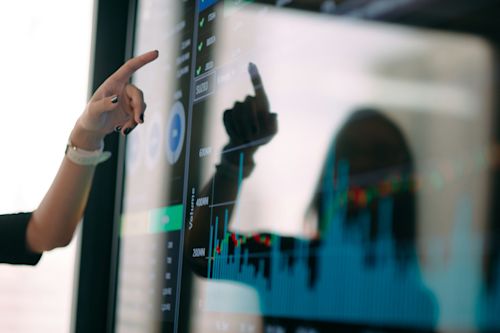
The English proverb “Measure twice and cut once” highlights the importance of precision and efficiency in a drawing for craftsmen, as otherwise, it could result in a waste of time and materials.
The construction sector has long suffered from a poor reputation due to its inefficiency, delays, and cost overruns. Although the sector is increasingly turning to digitization, large projects can still take 20% longer than planned and typically exceed the budget by 80%.
But a new technology is emerging, and it has the potential to revolutionize the way we build, making it easier than ever to “measure twice and cut once” in the construction field: Digital twins.
What is a “digital twin”?

The technology giant IBM describes the digital twin as “a virtual model designed to accurately reflect a physical object.” Therefore, a digital twin is a dynamic virtual representation of a physical asset, constantly updated with real-time data to reflect its behavior and condition. It is a sophisticated 3D model that goes far beyond simple images and integrates data streams from sensors, historical records, and even simulations.
Organizations can abandon guesswork and turn to digital twins, which act as virtual laboratories. These dynamic models simulate real-world scenarios, enabling informed decisions based on predicted outcomes.
How is a digital twin relevant to construction?

In the construction field, digital twins, like virtual mirrors of physical assets, drive efficiency and decision-making.
Take the example of building a wind turbine: Real-time sensor data from actual turbines feeds the digital twin, creating a dynamic representation of its performance and environmental conditions.
This digital counterpart becomes a powerful optimization tool. Wind patterns can be analyzed to strategically place additional turbines to maximize energy output, while monitoring the stress on critical components enables predictive maintenance, thus avoiding costly downtime.
Construction teams can even rehearse complex procedures on the digital twin, ensuring smooth execution in the real world.
5 advantages of digital twins for construction projects

Digital twins offer a multitude of advantages for construction projects, impacting different stages and stakeholders, and extending well beyond the design and construction processes.
1. Improved design and planning
Digital twins are transforming design and planning by allowing stakeholders to virtually test various configurations, optimize material and equipment needs, and share a unified vision for smoother collaboration, minimizing costly rework and promoting efficient resource management.
Furthermore, all stakeholders have access to the same information, which improves communication, transparency, and overall decision-making.
2. Increased efficiency and cost reduction
By acting as a real-time mirror of the construction site, digital twins make it possible to proactively identify and mitigate delays, streamline workflows through data-driven optimizations, and detect errors and conflicts early on, resulting in significant cost savings and smoother, more efficient project execution.
3. Improved safety and maintenance
Digital twins enhance safety by providing virtual tours to locate hazards, and enable predictive maintenance by monitoring real-time sensor data. This helps prevent equipment failures and extend asset lifespans through optimized maintenance strategies, contributing to safer and more durable buildings or infrastructure.
4. Driving sustainable outcomes
Whether it’s minimizing material waste, optimizing energy efficiency, or facilitating circular economy practices and remote collaboration, digital twins enable construction projects to reduce their environmental impact.
By acting as digital replicas of real projects, they guide informed decision-making, encourage sustainable material choices, and enable smart building management, ultimately contributing to a greener future in the construction sector.
5. Future-proofing construction projects
From flexible design updates to predictive maintenance and data-driven investment decisions, digital twins act as the visionary guide for construction, ensuring projects adapt to evolving needs, remain resilient in the face of future challenges, and leverage advancing technologies.
This adaptability, resilience, and the integration of an open data ecosystem not only future-proof individual projects but also pave the way for a more sustainable and innovative construction sector as a whole.



